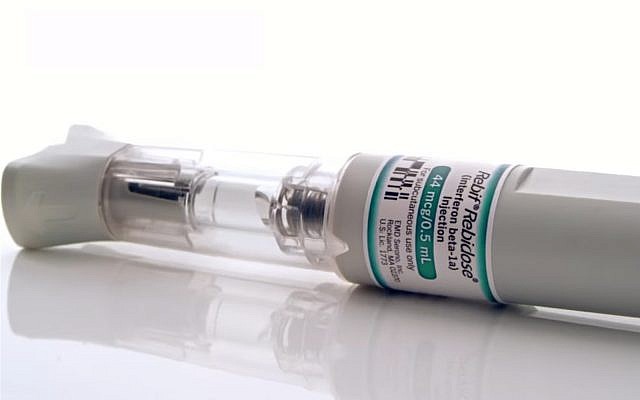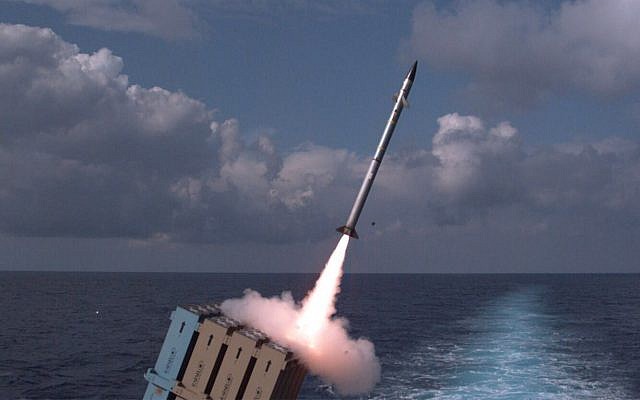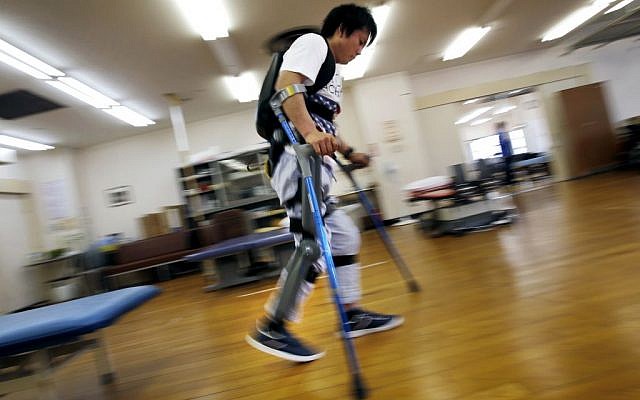‘Thou Shalt Innovate’: 15 earthshaking Israeli technologies
This excerpt from Avi Jorisch's new book on Israeli ingenuity lists inspiring innovations that are making a world of difference
Avi Jorisch’s new book “Thou Shalt Innovate: How Israeli Ingenuity Repairs the World,” by Gefen Publishing House Ltd. lists 15 Israeli innovations that are impacting the world. (See separate story.)
Below is an excerpt from an appendix to the book that provides brief summaries of what the 15 technologies are, in chronological order:
1955 — The solar water collector; Dr. Harry Zvi Tabor develops the black stripping that gathers solar energy and connects it to a contraption to collect heated water. This new type of solar heater, also known as the dud shemesh, yields more hot water and produces more electricity than a turbine.
1963 — The chemical structure of marijuana; Raphael Mechoulam discovers the chemical structure of the active compounds in marijuana, including cannabidiol (CBD) and tetrahydrocannabinol (THC), which is later used to treat seizures, among other disorders.
1965 — Modern drip irrigation. Simcha Blass and Kibbutz Hatzerim sign a contract to start Netafim and mass-produce the world’s first modern drip irrigator, which helps farmers, cooperatives, and governments conserve more water.

Cannabis plant (Kobi Gideon/Flash90)
1979 — A drug for Multiple Sclerosis. Michel Revel discovers a novel way to treat multiple sclerosis by experimenting on foreskin. He develops Rebif, one of the leading drugs to treat MS.

Rebif is a drug for multiple sclerosis that came about from Michel Revel experimenting on foreskin (YouTube screenshot)
1985 — Grain bags. Dr. Shlomo Navarro develops the Grain Cocoon, a large, hermetically sealed bag for rice, grain, spices, and legumes that doesn’t require pesticides.
1987 — Preventing bird and aircraft collisions. Using radar, motorized gliders, drones, and a network of bird watchers, Yossi Leshem creates a precise map of the one billion birds that fly over Israel each year. His research reduces the collision rate between birds and planes by 76 percent, saving almost a billion dollars.
1990 — A better bandage. Bernard Bar-Natan develops the Emergency Bandage, a unique life-saving product that instantly controls massive bleeding and prevents infections in trauma situations.

Illustrative image of a flock of birds (Ocs_12, iStock by Getty Images)
1993– The internet firewall. Gil Shwed, Shlomo Kramer, and Marius Nacht create the first firewall to protect corporate and personal data online.
1993– A GPS for brain surgeries. Imad and Reem Younis launch Alpha Omega, the largest Arab high-tech company in Israel. It has created the industry standard for devices that act as a GPS inside the brain for deep brain stimulation procedures used to treat essential tremor, Parkinson’s, and other neurological disorders.
1998 — The PillCam. Dr. Gavriel Iddan creates an ingestible camera and radio transmitter that can travel through the gastrointestinal tract to take photos of your insides. The PillCam provides doctors with an effective tool for less invasive screening, diagnosis, and treatment of gastrointestinal-related diseases.

The Pillcam, a swallowable camera to diagnose problems in the digestive tract, developed by Israeli company Given Imaging (screen capture: YouTube)
2001 — Robotic back surgery. Moshe Shoham and Eli Zehavi, the founders of Mazor Robotics, create a guidance system that transforms spinal procedures into more of a science. Mazor’s revolutionary technology allows doctors to take a CT image before surgery and create a three-dimensional blueprint of the spine. This gives medical personnel the ability to plan the operation with a high degree of precision.
2004 — The Exoskeleton walking device. Dr. Amit Goffer creates ReWalk, an exoskeleton that allows paraplegics to walk again.

Prime Minister Benjamin Netanyahu (left) and US President Barack Obama look on as disabled IDF veteran Radi Kaiuf demonstrates the ReWalk exoskeleton system. Kaiuf, who was formerly nearly fully paralyzed, completed the Israel Marathon in 2012 using the system (Kobi Gideon / GPO /FLASH90)
2005 — Reviving extinct plants. Using ancient seeds found in Masada in the early 1960s, Dr. Sarah Sallon and Dr. Elaine Solowey find a way to resurrect something that vanished roughly two thousand years ago: the Judean date palm, one of the ancient Mediterranean’s most important plants.
2006 — First responder geo-locator and ambucycle. Eli Beer starts a group of volunteer EMTs called United Hatzalah, all of whom have a standardized app on their smartphones that acts as a dispatch, immediately notifying the five closest people to a victim. These EMTs often travel by way of ambucycles — refitted motorcycles that act as mini-ambulances and are nimble enough to weave through traffic.

The Israeli Navy tests a ship-based Iron Dome missile defense system, which is declared operational, on November 27, 2017 (Israel Defense Forces)
2011 — The Iron Dome Missile System. Brigadier General Danny Gold and Chanoch Levine successfully down a Hamas rocket from Gaza using the revolutionary Iron Dome targeting system. Using advanced radar and software, this device predicts a rocket’s trajectory and shoots it out of the sky.


No comments:
Post a Comment